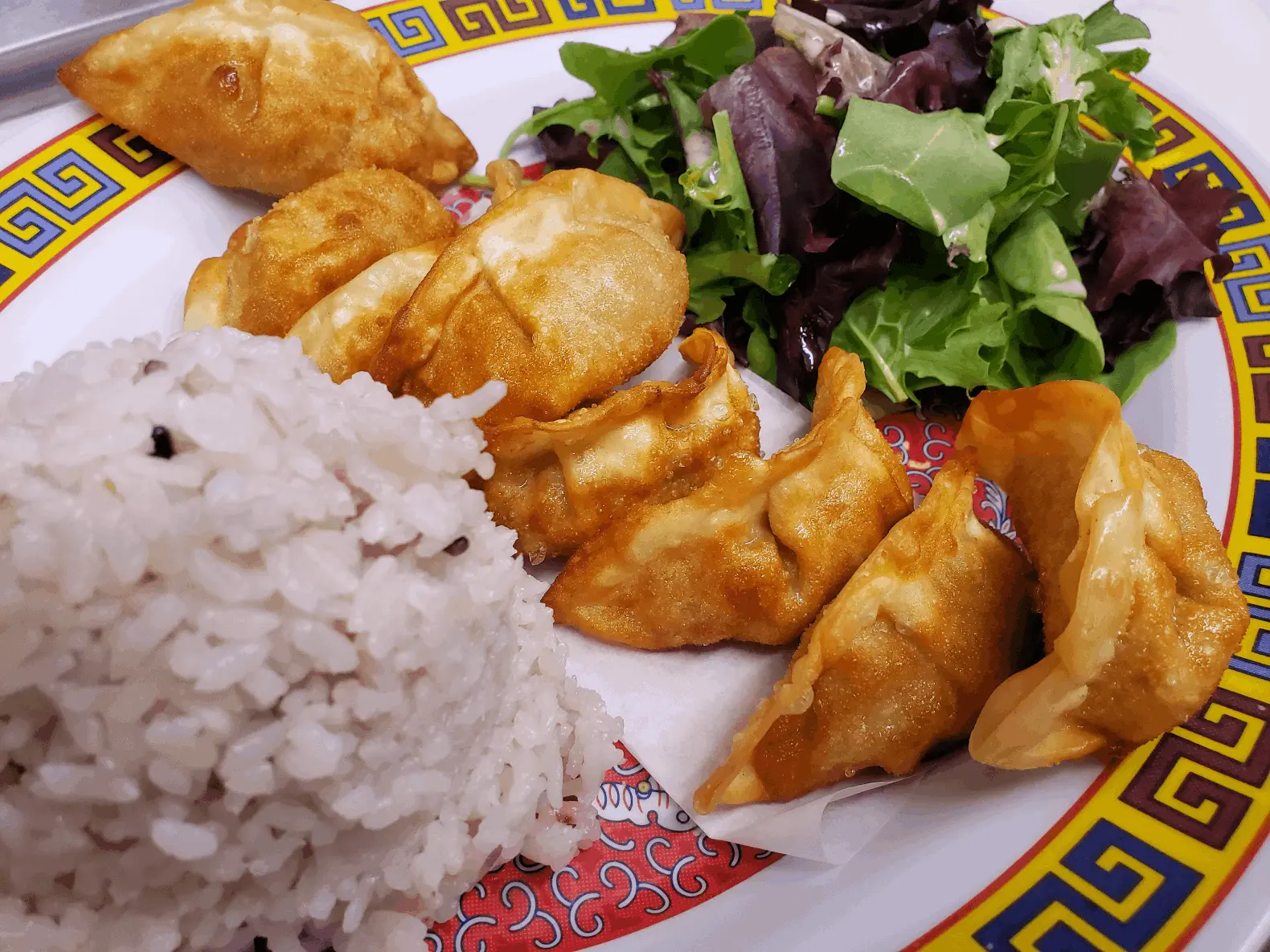Mandu - Korean Dumplings - Stuffed, Steamed, Fried or Cooked in Soup

Article by Gil "hannaone"
© Copyright 2024. All rights reserved.
Image by hannaone: Mandu
Mandu
Mandu, also known as Korean dumplings, is a versatile and beloved dish that holds a significant place in Korean cuisine. These delectable dumplings come in various forms and can be enjoyed steamed, fried, in a soup, or boiled. The art of making mandu has been passed down through generations, and it continues to be a staple in Korean households and restaurants.
History and Significance of Mandu in Korean Cuisine
Mandu has an interesting history, and may be an early example of Korean Fusion. Along the silk road in central Asia there are words for meat filled dumplings that are very similar to Mandu, such as Uyghur manta, Turkish mantı, Kazakh mänti, Uzbek manti, Afghan mantu, and Armenian mantʿi.
These dumplings likely made their way to Korea during the 14th century, brought by Yuan Mongolians during the Goryeo dynasty. The Mongolian incursion relaxed religious prohibitions against consuming meat, allowing dishes like mandu to become part of Korean cuisine.
They have evolved over time to become a cherished culinary delight.
These Korean dumplings hold a symbolic value, often representing togetherness and prosperity, especially during celebratory occasions such as the Lunar New Year and family gatherings.
Types of Mandu
There are various types of mandu, each with its unique characteristics and flavors. Some popular types include Wang Mandu (King Dumplings), Kimchi Mandu, and Yachae Mandu (Vegetable Dumplings). Each type offers a distinct culinary experience, catering to a wide range of preferences.
Haemul Mandu includes fresh seafood such as shrimp, squid, and clams, mixed with vegetables and seasonings for a refreshing taste. Gogi Mandu, on the other hand, is filled with minced meat and can be either steamed or fried for a more savory option. And for those looking for a healthier alternative, there are also Mandu made with tofu or whole wheat flour wrappers.
With so many options to choose from, Korean Mandu truly offers something for everyone's palate.
Traditional Ingredients and Fillings for Mandu
The traditional ingredients and fillings for mandu reflect the diverse flavors and textures of Korean cuisine. Common fillings include seasoned ground pork, beef, tofu, and a variety of vegetables such as Korean leeks, green onions, and cabbage. These ingredients are meticulously combined to create a harmonious blend of flavors, resulting in savory and satisfying dumplings that are enjoyed by many.
Making Mandu at Home
To start, prepare the the type of filling that you want, beef, pork, chicken, seafood, or vegetarian with seasoning that compliments the filling. Most of the filling ingredients should be ground or minced. Mix these ingredients thoroughly.
Then, lay out your mandu wrappers on a clean surface. Place a spoonful of the mixture into the center of each wrapper. Wet the edges with water, fold them over the filling, and press firmly to seal, crimping the edges for a secure close.
Once your dumplings are assembled, they can be cooked in a variety of ways which we will explore in the next section. Remember, the quality of ingredients greatly influences the final taste, so choose fresh and high-quality products for the best homemade mandu experience.
Different Cooking Methods for Mandu
Mandu can be enjoyed in various styles, each bringing out distinct flavors and textures.
Steaming is a healthy option that renders the dumplings tender with a delicate skin. Simply place the mandu in a steamer lined with parchment paper and let the steam work its magic for around 15 to 20 minutes.
Alternatively, if you crave a crispy exterior, frying is your go-to method. Heat oil in a pan and fry the dumplings until they're golden brown, ensuring a crunchy bite.
Another popular method is boiling the mandu, making them soft and succulent, perfect for adding to soups. Lastly, many enjoy mandu added to a flavorful broth, creating a comforting mandu soup, ideal for colder days.
Baking and air frying are becoming popular cooking methods as well.
Serving Suggestions and Accompaniments
Pairing mandu with the right side dishes and sauces enhances its taste. A classic dipping sauce made from soy sauce, vinegar, and a dash of sesame oil is the usual accompaniment, giving it a zesty kick. For a heartier meal, serve mandu with sticky rice and an assortment of banchan, such as kimchi, seasoned spinach, or bean sprouts.
Mandu can also complement a main dish like Korean BBQ, providing a delightful variation in texture and flavor. Don't forget to add a sprinkle of chopped green onions or Kongnamul Guk or a pinch of sesame seeds for garnish, adding both beauty and a nutty taste to the dish.
Where to Find Authentic Mandu
Most Korean restaurants will offer Mandu in one form or another. From the classic steamed mandu to the crispy fried version, Mandu has become very popular. You can find it at Korean themed food trucks, at food courts in Korean Markets, and Korean Soup Restaurants.
Frozen mandu is available at most Korean grocery stores and many other Asian stores. Even some larger traditional grocery chains are beginning to offer frozen mandu.
Give it a Try
Mandu is a versatile dish that can be prepared in numerous ways, catering to various preferences and tastes. With little effort you can venture into the world of Korean cuisine and savor the delights of authentic mandu.

© Copyright 2024. All rights reserved.
Image by hannaone: Fried Mandu as a meal



